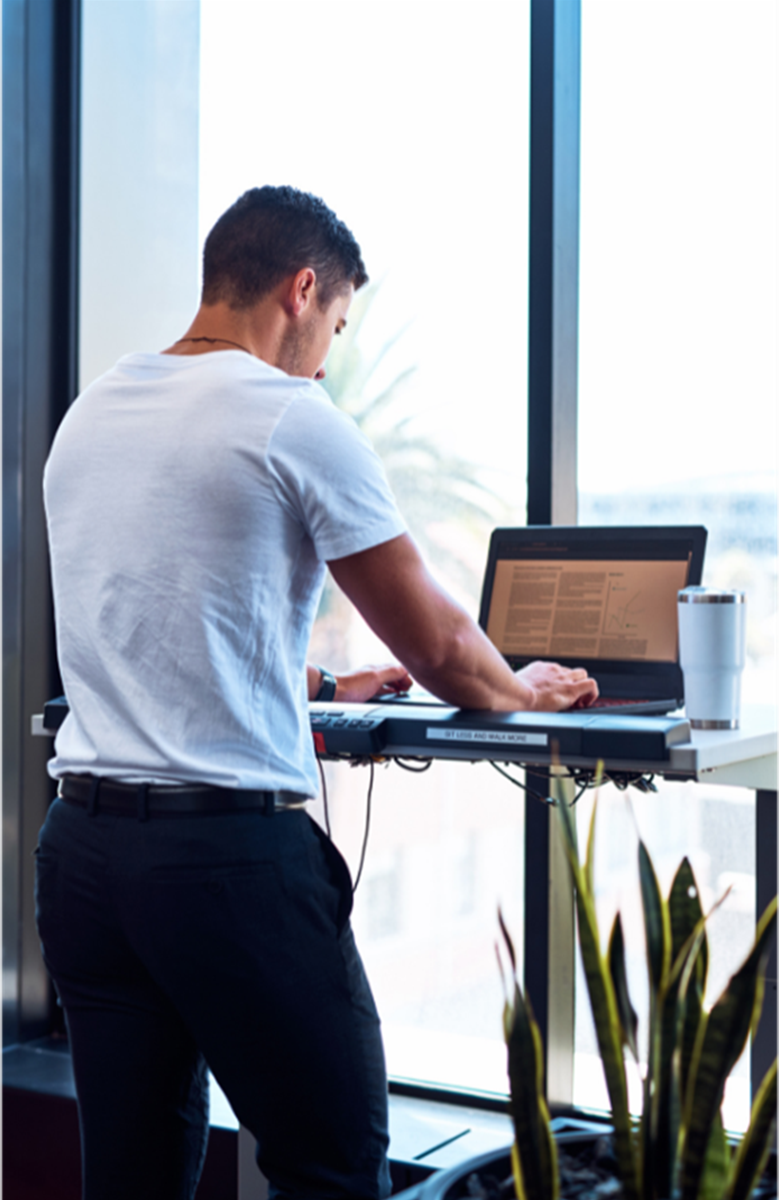In recent years, the traditional 9-to-5 office culture has undergone a significant transformation. The sedentary nature of desk jobs has prompted many workers to explore alternative solutions to mitigate the negative effects of the traditional office chair. One such solution gaining popularity is the use of standing desks. Proponents argue that standing while working can improve posture, increase lumbar flexion, and enhance cognitive performance. However, research suggests that the relationship between standing at work and cognitive performance is not as straightforward as it may seem.
The Complex Interplay: Posture and Cognitive Performance
Standing desks have garnered attention for their potential to improve lumbar flexion and alleviate the strain on the lower back that often accompanies prolonged sitting. It is indeed true that standing can encourage better posture by reducing the risk of slouching and promoting spinal alignment. This potential benefit, however, comes with its own set of challenges.
Schrafel et al. delved into the effects of standing on cognitive performance using a computerized neurocognitive test battery. Their findings revealed a significant decrease in complex attention, a cognitive ability responsible for maintaining sustained focus when participants were in a standing posture1. This indicates that while standing may improve posture, it could potentially hamper cognitive performance, particularly tasks requiring prolonged concentration.

The Battle for Cognitive Resources: Standing, Sitting, and Walking

To better understand the dynamics between posture and cognitive abilities, researchers like Lajoie et al. have conducted multiple studies to assess attentional demand across different postures. These studies highlight a crucial aspect of human behavior – the allocation of cognitive resources based on priority. The cognitive resources needed to maintain postural balance, especially in dynamic postures like standing and walking, can temporarily diminish the cognitive resources available for other tasks
The findings suggest that cognitive resources are allocated based on the complexity of the posture, with sitting being the least demanding in terms of postural balance. This allocation pattern means that tasks requiring higher cognitive demands, such as complex problem-solving or critical thinking, might be compromised when performed in postures that demand greater body movement2.
Striking the Right Balance: Movement and Focus
While standing and incorporating movement into the workday can be beneficial for overall health, it's essential to strike a balance between movement and cognitive focus. Müller et al. (2007) and Siu and Woollacott (2007) propose that to achieve optimal cognitive performance during tasks that require intense focus, sitting remains the preferred posture. The reduced demand for cognitive resources for maintaining postural balance allows the brain to allocate its full capacity to the task at hand2. Studies show that users are only taking advantage of their standing desks for less than 20% of their workday3.
Recommendations for Enhanced Productivity
To harness the benefits of both movement and cognitive focus, it's crucial to adopt a comprehensive approach:
Incorporate Movement: While sitting is optimal for tasks requiring deep concentration, incorporating regular movement breaks is essential. Short walks, stretches, or brief standing periods can help improve blood circulation and reduce the risk of discomfort associated with prolonged sitting.
Optimal Seating: When sitting, choose an office chair that supports positive posture from the ground up with pelvis support. New innovations like the Anthros chair have advanced the office chair by supporting the body in the right places biomechanically to reduce the strain on your back and neck all while promoting comfort during extended periods of focus.
Task Management: Allocate tasks based on cognitive demand. Reserve sitting for tasks requiring intense concentration, and use standing or walking for activities that involve brainstorming, idea generation, or creative thinking. This healthy balance can reduce fatigue as the Journal of Occupational Medicine stated that 66% experienced decreased productivity because of fatigue4.
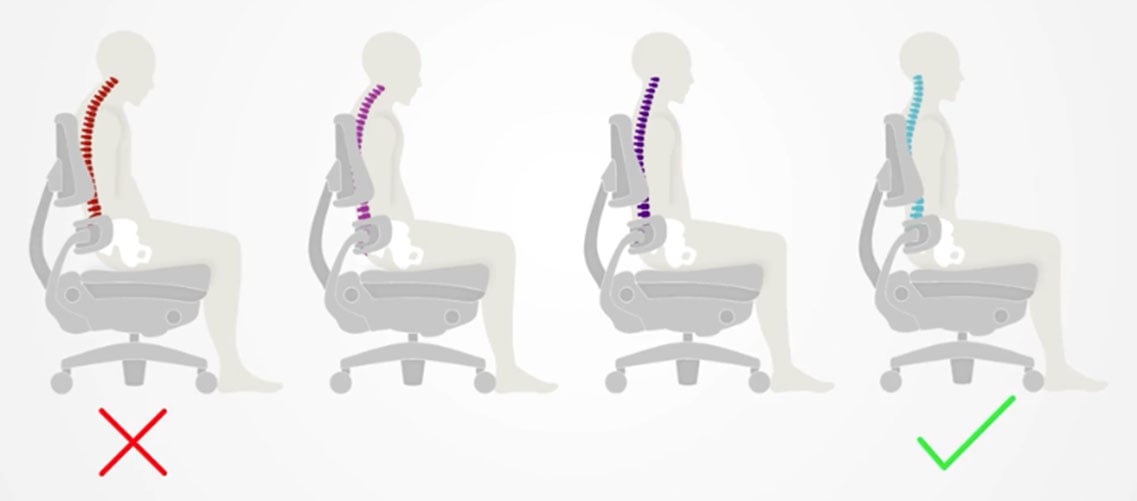
In the quest for improved workplace health and productivity, the debate surrounding standing versus sitting at work continues to unfold. Contrary to popular belief that standing can burn more calories than sitting a study by The European Journal of Preventive Cardiology found that standing desks only burn an additional 7 more calories per hour than sitting5. While standing can encourage an active posture, research suggests that the risk of developing low back pain increases to 50% for standing bouts greater than 2 hours (Callaghan, 2019), and the impact on cognitive performance also requires careful consideration6.
Ultimately, the key lies in acknowledging the benefits of both standing and sitting and strategically incorporating movement into your workday. By understanding the intricate relationship between posture, comfort, and cognitive focus, you can create an environment that nurtures both your physical well-being and your cognitive capabilities, leading to a more productive and fulfilling work experience.
So, if you’re looking to optimize your posture and productivity at work, look no further than Anthros.
Anthros is the only chair in the world that is guaranteed to improve posture or your money back. The science-backed, patented design is registered with the FDA as a posture-improving chair and is proven to have the lowest pressure (most comfortable) cushion on the planet (verified by university testing).
Take the next step to increase comfort, better posture, and crushing your workday!
References:
1. Schraefel M., Jay K., Andersen L. L. (2012). Assessing the effect of self-positioning on cognitive executive function. Journal of Ergonomics, 2(110).2. Sang Hyeon Kang, Juhyeong Lee, Sangeun Jin. (2012) Effect of standing desk use on cognitive performance and physical workload while engaged with high cognitive demand tasks. Applied Ergonomics, Volume 92.
https://www.sciencedirect.com/science/article/abs/pii/S0003687020302544
3. Making office workers healthier: A public health intervention making office workers use their height-adjustable office desks more, conducted for LINAK® 2017
4. Ricci JA, Chee E, Lorandeau AL, Berger J. Fatigue in the U.S. workforce: prevalence and implications for lost productive work time. J Occup Environ Med. 2007 Jan;49(1):1-10. doi: 10.1097/01.jom.0000249782.60321.2a. PMID: 17215708. https://journals.lww.com/joem/abstract/2007/01000/fatigue_in_the_u_s__workforce__prevalence_and.1.aspx
5. Farzane Saeidifard et al., Differences of energy expenditure while sitting versus standing: A systematic review and meta-analysis, European Journal of Preventive Cardiology, Volume 25, Issue 5, 1 March 2018, Pages 522–538,https://doi.org/10.1177/2047487317752186
6. Gregory DE, Callaghan JP. Prolonged standing as a precursor for the development of low back discomfort: an investigation of possible mechanisms. Gait Posture. 2008 Jul;28(1):86-92. doi: 10.1016/j.gaitpost.2007.10.005. Epub 2007 Nov 28. PMID: 18053722. https://pubmed.ncbi.nlm.nih.gov/18053722/
Recent Post
Exercises to Avoid With a Herniated Disc
March 6, 2025A herniated disc can put a serious damper on...

Gentle Back Exercises for Lower Back Pain & Herniated Discs
February 17, 2025Adding a cushion to your office or gaming chair...
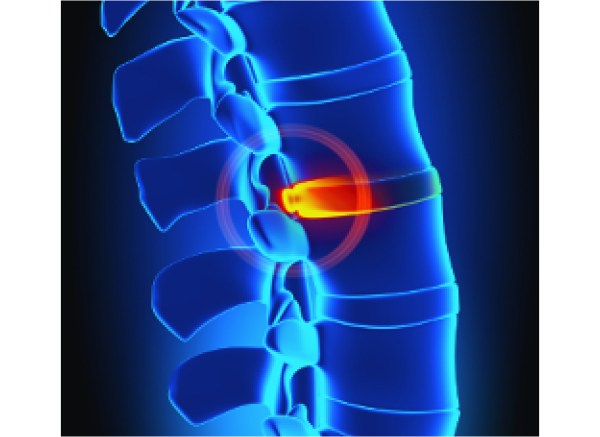
Bulging Disc vs. Herniated Disc:
February 5, 2025Adding a cushion to your office or gaming chair...







